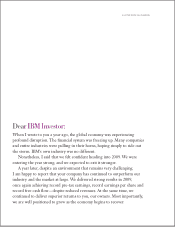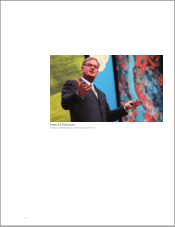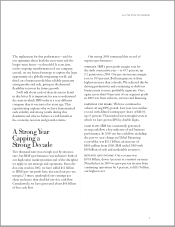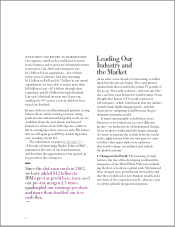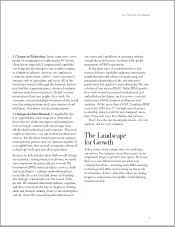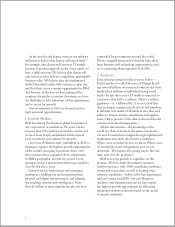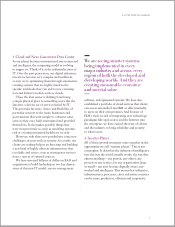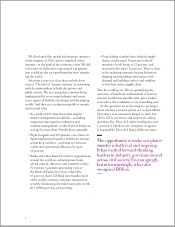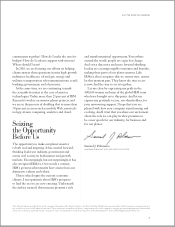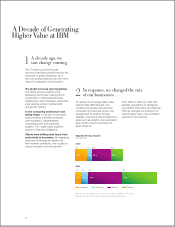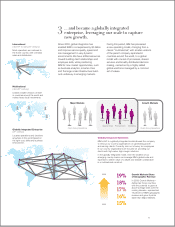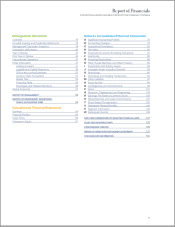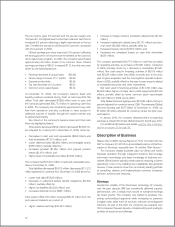IBM 2009 Annual Report Download - page 13
Download and view the complete annual report
Please find page 13 of the 2009 IBM annual report below. You can navigate through the pages in the report by either clicking on the pages listed below, or by using the keyword search tool below to find specific information within the annual report.
Since 2005, global integration has
enabled IBM to cut expenses by $5 billion
and improve service quality, speed and
risk management in very dynamic
environments. We have shifted resources
toward building client relationships and
employee skills, while positioning
IBM for new market opportunities, such
as business analytics, smarter cities
and the large-scale infrastructure build-
outs underway in emerging markets.
During this period, IBM has pioneered
a new operating model, changing from a
classic “multinational,” with smaller versions
of the parent company replicated in
countries around the world, to a global
model with one set of processes, shared
services and broadly distributed decision
making, carried out by a highly skilled
global workforce managed by a common
set of values.
. . . and became a globally integrated
enterprise, leveraging our scale to capture
new growth.
Globally Integrated Enterprise
(21st century )
Locates operations and functions
anywhere in the world based on
the right cost, skills and business
environment.
Globally Integrated Operations
IBM’s shift to a globally integrated model allowed the company
to refocus our country organizations on generating growth
and serving clients. Currently, nine out of every ten employees
in our country organizations are focused on providing our
clients with high-value, high-margin solutions.
In the globally integrated model, even the smallest of our
emerging country teams can leverage IBM’s global scale and
expertise to deliver value of a depth and breadth unattainable
in a multinational construct.
Growth Markets Share
of Geographic Revenue
In 2009, Growth Markets—
defined as those countries
with the potential to grow at
above-average rates over the
coming decade—represented
19 percent of IBM’s geographic
revenue and grew 8 points
faster than Major Markets.
2009
19%
18%
17%
16%
15%
2005
Multinational
(mid-20th century )
Creates smaller versions of itself
in countries around the world and
makes heavy local investments.
International
(mid-19th to early 20th century )
Most operations are centered in
the home country, with overseas
sales and distribution.
3
Client-facing Operations
Major Markets Growth Markets
Client-facing Operations
Procurement
FinanceLegal HR
MarketingSupply Chain
11


